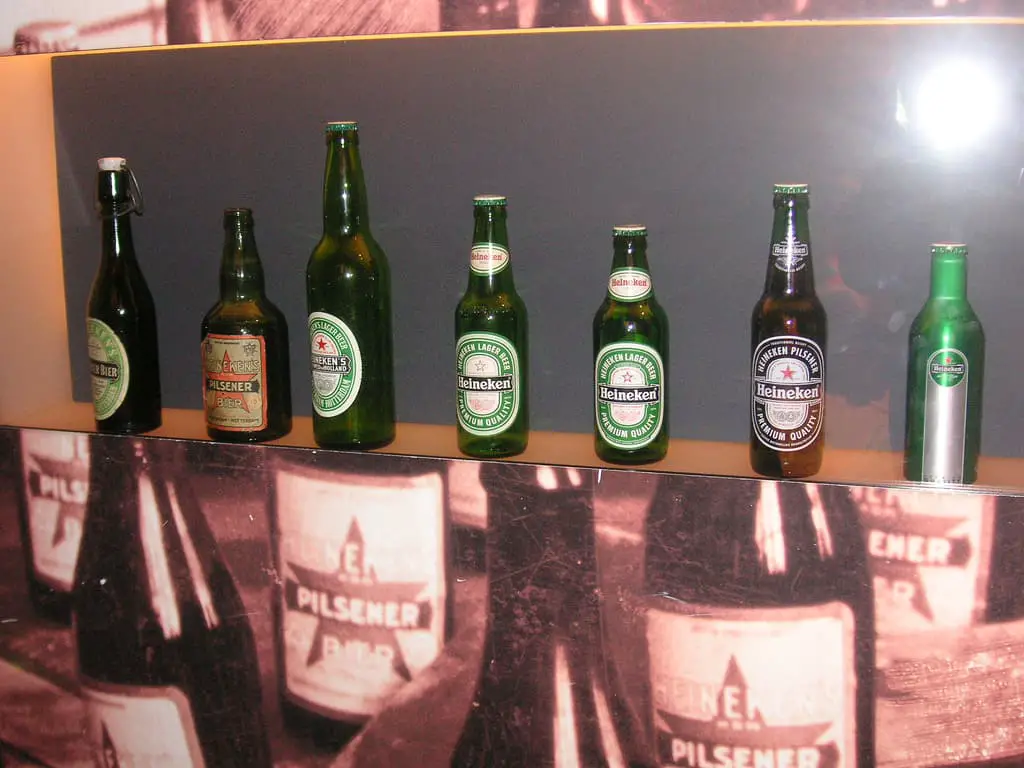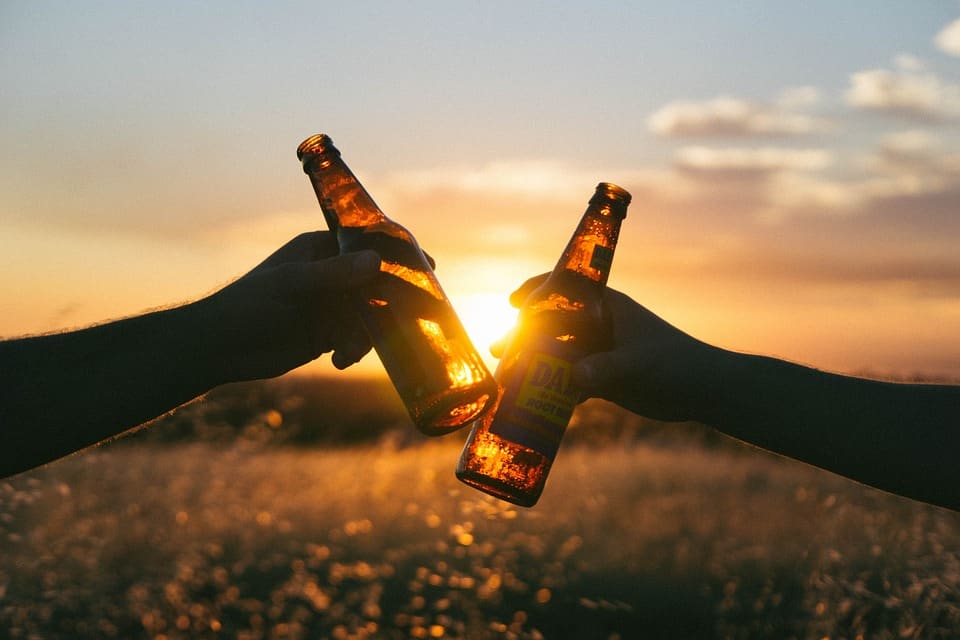Table of Contents
*This post may contain affiliate links. As an Amazon Associate we earn from qualifying purchases.
The history of beer is said to be almost similar to that of wine. Experts assume that beer was adopted by civilizations with little viticulture. While we may never be able to trace the history of beer, evidence suggests that beer existed even before the invention of bread.
Beer: The First Documented Recipe

Accordingly, historians happen completely unable to determine the history of beer. They all agree that the first beer, like bread, implied its development by agrarian societies. Also, with access to enough surplus grain to use for purposes other than feeding. Moreover, the timeline for the development of the first beer got almost similar to that of wine,
Archeological evidence shows that ancient Mesopotamian culture owns the creation of the first beer ever. Although, the cultures through the history of beer failed to document anything. Archeologists discovered crocks containing beer-like remains and bits of malted barley dating back to 10,000 B.C.
The Creation
It occurs possibly that the invention of beer seems accidental. Then, the first beer self-fermented cereal porridge whose intoxicating properties encouraged the consumers to repeat the process.
The ancient Egyptians take credit for the first known documentation of the brewing process at about 5,000 B.C. The recipe, written on papyrus scrolls, describes the brewing process. By today’s standards, the ancient Egyptian beer made use of ingredients such as pomegranates, dates, meadowsweet, olive oil, and other native herbs considered as harsh.
The Early Uses
In the history of beer, Egyptians mainly used beer in religious rituals, with the Pharaohs dictating the brewing schedules and directing the distribution procedures. The Egyptians also used beer for medical purposes and as part of the burial provisions necessary for the journey to the next life.
Additionally, a 3,900-year-old Sumerian poem named the “Hymn to Ninkasi” outlining the brewing of beer from barley via bread. They consider this as one of the oldest beer recipes.
Archaeological findings further prove that the Chinese used a production process much similar to that of ancient Mesopotamians and Egyptians to produce beer about 7,000 B.C. On the other hand, the Elba tablets show that beer brewed in Syria as far back as 2500 B.C.
Early Beer Recipes

Different cultures used different grains to make beer. Accordingly, chemical tests of beer residue found in a jar at an excavation site in modern day Iran. Here barley remained as a beer ingredient before 3400 B.C. The appearance and taste of beer appear much different back then.
The residue of beer from Mesopotamia indicates that Sumerians and Babylonians used drinking straws. Further, they take beer in order to filter the bitter solidified byproducts of fermentation. During the same period, beer implied a gruel-like fully-grained substance.
Finally, in 55 B.C., the brew crossed the Mediterranean to Northern Europe thanks to the Roman legions. The abundance of barley in Europe made it the primary ingredient in the region.
Lesser-known ones
Hops appear as common in the pre-medieval period, and brewers used whatever ingredient available to them. While Egyptians used barley, other cultures later used grains and plants such as cassava, rice, wheat, persimmon, millet, sorghum, maize, rye, and millet.
Brazil’s recipe, however, signified quite different because Brazil used sweet potatoes. For centuries, herbs and spices known as gruit which got used in Europe. The beginning of the second millennium A.D. made hops popular.
The Birth of Modern Beer

After centuries of using malted barley as the main fermentable sugar, European brewers adopted the use of hops in beer recipes. Hops replaced spices and herbs such as bitter roots and spruce boughs to become the main flavoring agent in beers.
The Monks
German monks got credited for the first use of wild hops in the brewing process at around 1150 A.D. They liked that hops countered the otherwise sweet malt flavors while still acting as preservatives. The ingredient rapidly caught on so much that Germany was growing hops for export by the 13th century.
In the Middle Ages, monks were considered the prominent brewers, and there was a brewery in every monastery. Apart from replacing gruit with hops, monks also introduced the concept of cold storing (lagering) to enhance flavor. Germans preferred the bottom-fermentation method, which produced cold-temperature lagers by storing beer in the Alps’ caves.
The Englishmen
On the other hand, the English were more into mild-temperature ales made using the top-fermentation, which involved storage of brews in cellars. The British Isles rivaled Germany’s hold of the beer industry by producing styles of beer such as stouts, porters, and pale ales, which are still popular today.
In the 16th century, German brewing guilds established the “Reinheitsgebot” purity laws that abolished all ingredients except hops, water, and barley from the beer recipe. The guilds did not know of the existence of yeast. It took centuries for its acceptance into the list of ingredients.
It was at about the same period that the word “beer” was coined from “bier,” a variation used in the Germanic languages and imported into Britain by the Saxons. Some historians claim that the Germanic word beer sourced from the Chuvash word “pora.” Many other languages adopted the Germanic word such as Turkish bira, French bière, Romanian bere, and Italian birra.
History of Beer and the Beer in the New World

Columbus reported finding Indians making black birch sap and corn beer in the 1490s. This disputed the claims by the early colonists that they introduced the first beers in the Americas. Nevertheless, a beer distillery occurred as the first permanent structure to be built at Plymouth Rock by the first pilgrims.
In fact, their sole reason for landing there was to replenish their beer supply. Philadelphia and New York created the first brewing stations in North America, with New York alone having more than 40 breweries by the early 1800s.
The Americas
English-style ales remain as the most common types of beer in early microbrewery America. But, new styles started gaining popularity in the mid-1800s as Central and Northern European immigrants poured in. Pilsner-style lagers remain as the most prevalent styles of beer in Europe in the period.
Consequently, they replaced the heavier ales due to their crisper tastes. By the turn of the 19th century, beer production prevailed among America’s most vibrant industries thanks to the influx of European immigrants.
During and After the Prohibition period
The industry’s prosperity prevailed until the Prohibition period (1920 to 1933). This caused the collapse of most microbreweries and brewhouses. Even after this period, many businesses unable to reestablish themselves because most brands lost their loyal clientele. However, few remained loyal to consume as much beer as before affordably.
Most small breweries continued to suffer decades after Prohibition due to stringent policies such as the Tied House Law. This banned breweries from selling their brews on premises. Consequently, the number of small breweries reduced from more than 2,000 before Prohibition to just several hundred by 1983.
Since then, most states passed legislation that facilitated the regulated establishment of more than 2,000 brewpubs in the United States.
Beer’s Popularity: Then and Now

Indeed, beer’s popularity fluctuated over time in the history of beer. Moreover, ancient civilizations loved beer so much that it existed as a form of currency. Also, beer transpires as a mode of payment to the builders of the Egyptian pyramids in the history of beer. Furthermore, evidence suggests that about five millennia ago, laborers in the Sumerian city of Uruk received part of their salaries in the form of beer.
For Nutrition
As a source of nutrition, Babylonians created more than 20 beer recipes in the history of beer. The Sumerian kindred wrote a poem 3,900 years ago celebrating beer and “Ninkasi,” as the patron goddess of beer. Perhaps the Egyptians held the beer in the highest regard. Subsequently, due to Pharaohs and royalty buried with vats of beer to enjoy in the afterlife.
Presently, beer became an integral part of people’s daily diet. Beer became one of Europe’s favorite drinks in the Middle Ages as considered the safest drink throughout the history of beer. During that period, human waste contaminated many sources of water. Therefore, the cause of several epidemics.
The promotion of beer and other alcoholic drinks as a safe drink became important. Its preparation and the beer bottles involved heating has a purifying effect.
As a Royal Drink

In the history of beer throughout the British Empire, beer existed as an important a part of life. It became a strong ale as a part of the late 16th century Queen Elizabeth I’s breakfast. Similarly, the British army went to great lengths to ensure that each soldier received a daily ration of beer, regardless of posting.
In fact, some beer styles include the Indian Pale Ale as born from the discovery that higher alcoholic content and concentration of hops prevented beer from going sour or stale. The British Empire became responsible for the divergence of beer to most parts of the civilized world, especially those that they occupied.
History of Beer: Over-all Production
Although Prohibition served a major blow to both the beer industry and the overall popularity of beer in the United States. The sector showed tremendous improvement since the mid-1980s. By 1991, the United States beer industry became solely responsible for over 20 percent of the global beer production.
In the mid to late 1990s, the United States alone consumed 5.89 billion gallons of beer. Today, the beer industry occur as among the top earners in the United States, as specialty and craft beers gain on national brands.
Featured Image: CC by 2.0, Club Soda Guide, via Flickr

